Discover 20 hidden attractions, cool sights, and unusual things to do in Algiers (Algeria). Don't miss out on these must-see attractions: La Grande Poste, Notre Dame d'Afrique, and Martyrs' Memorial. Also, be sure to include Djamaa Ben farès in your itinerary.
Below, you can find the list of the most amazing places you should visit in Algiers (Alger).
Table of Contents
La Grande Poste
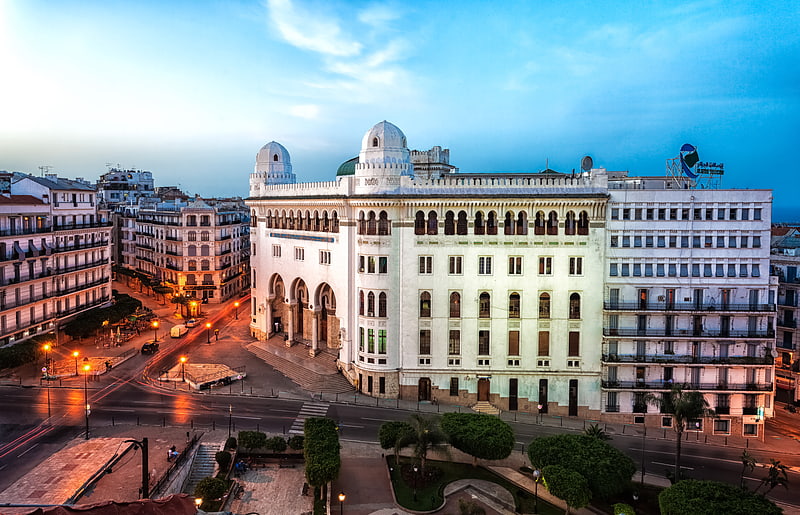
The Algiers Central Post Office, is an office building for postal services located at Alger Centre municipality in Algiers, Algeria. It was designed by architect Jules Voinot and Marius Toudoire. and was constructed in 1910. It is Algeria's largest post office building, In 2015, the state turned it into a museum.[1]
Notre Dame d'Afrique
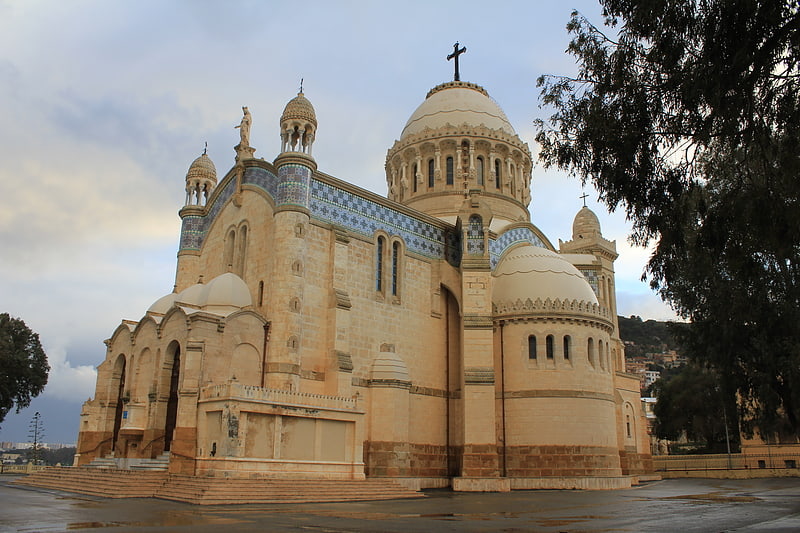
Also known as: السيدة الإفريقية
Catholic church with dramatic views. Notre Dame d'Afrique is a Catholic basilica in Algiers, Algeria.
Pope Pius IX granted two Pontifical decrees towards the shrine on the same day in 15 April 1876:
- The first decree invoked to canonically crown the venerated Marian image enshrined within. The rite of coronation was executed by the Archbishop of Carthage Charles Lavigerie on 30 April 1876.
- The second decree which raised the sanctuary to the status of Basilica based on an “immemorial custom”. (Pope Benedict XV later regulated to limit these privileges in 1918 to Papal edicts unless an ancient custom already refers to a building as a “Basilica”.
Address: Rue de Zighara, 16070 Algiers (باب الوادى دائرة)
Martyrs' Memorial

Also known as: مقام الشهيد
Iconic monument honoring independence. The Maqam Echahid is a concrete monument commemorating the Algerian War. The monument was opened in 1982, on the 20th anniversary of Algeria's independence. It is fashioned in the shape of three standing palm leaves, which shelter the "Eternal Flame" under it. At the edge of each palm leaf is a statue of a soldier representing a stage of Algeria's struggle for independence.[3]
Djamaa Ben farès
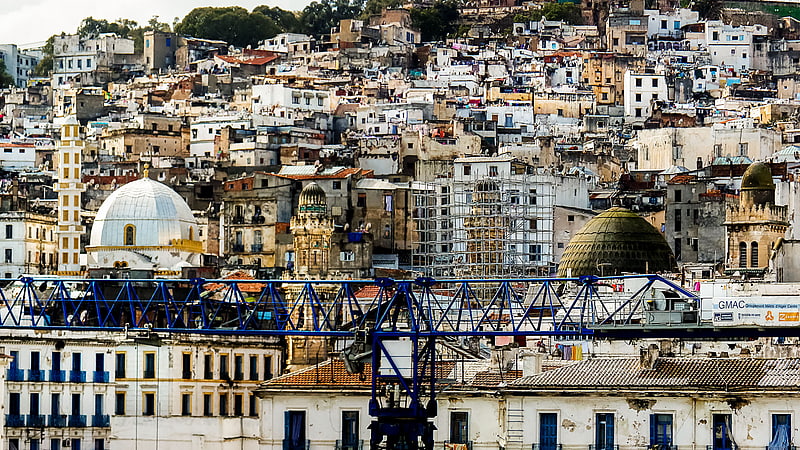
The Ben Farès Mosque, also known as Djamaa Ben Farès, originally built as the Great Synagogue of Algiers, is a mosque and former synagogue in Algiers. It was also formerly known as Djamâa Lihoud, which means "Mosque of the Jews" in Algerian Arabic vernacular.
Following the Civil war in Algeria and its abandonment in 1994, the synagogue was converted into the Ben Farès Mosque.[4]
Ketchaoua Mosque

Also known as: جامع كتشاوة
Mosque in Algeria. The Ketchaoua Mosque is a mosque in Algiers, the capital of Algeria. It was built during the Ottoman rule in the 17th century and is located at the foot of the Casbah, which is a UNESCO World Heritage Site. The mosque stands on the first of the Casbah's many steep stairways and was logistically and symbolically the cynosure of the pre-colonial city of Algiers. The mosque is noted for its unique fusion of Moorish and Byzantine architecture.
The mosque was originally built in 1612. Later, in 1845, it was converted during French rule, to the Cathedral of St Philippe, which remained so until 1962. The old mosque was demolished between 1845 and 1860 and a new church was built. It was converted into a mosque in 1962. In spite of these transitions over two different religious faiths in roughly the last four centuries, the mosque has retained its original grandeur and is one of the major attractions of Algiers.[5]
Great Mosque of Algiers
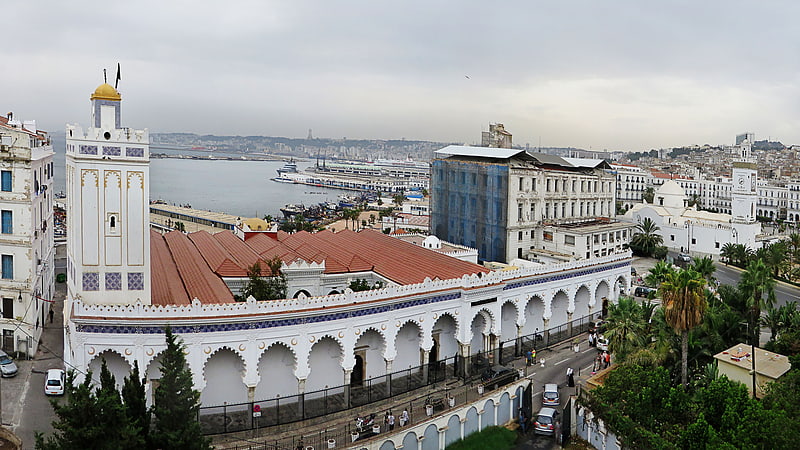
Also known as: الجامع الكبير
Mosque in Algeria. Djamaa el Kebir, also known as the Great Mosque of Algiers, is a historic mosque in Algiers, Algeria. It is located within the Casbah, near the city's harbor. Dating to 1097, it is one of the few remaining examples of Almoravid architecture, although it has undergone other additions and reconstructions since its foundation. It is the oldest mosque in Algiers and is said to be one of the oldest mosque in Algeria after Sidi Okba Mosque and Sidi Ghanem Mosque.[6]
Address: Rue El Mourabitoune, Algiers (باب الوادى دائرة)
Botanical Garden Hamma
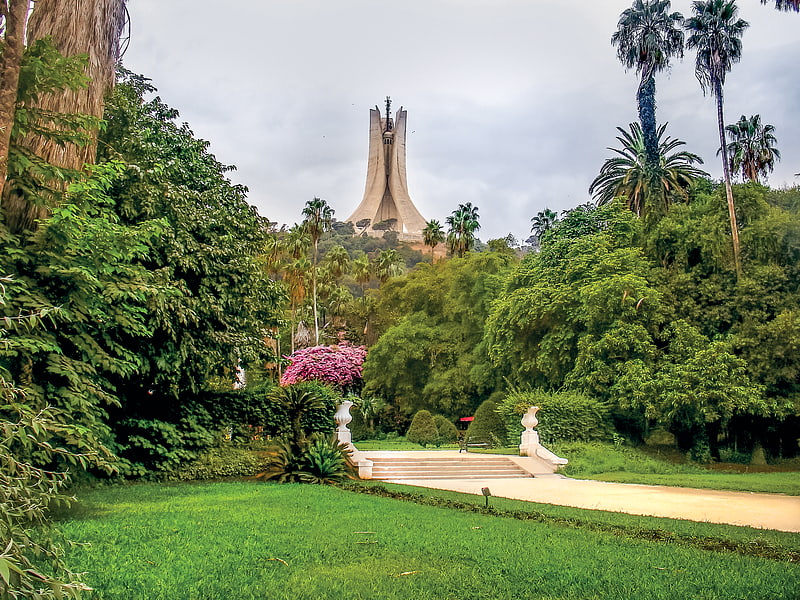
Also known as: حديقة التجارب
Botanical garden in Algeria. The Test Garden of Hamma, is a 32-hectare botanical garden located in the Mohamed Belouizdad district of Algiers. It was established in 1832.[7]
Address: Rue Hassiba Benbouali, Algiers (سيدي امحمد دائرة)
Palais des Raïs

Also known as: قصر الرياس
Art museum in Algeria. The Palais des Rais, also known as Bastion 23, is a classified historical monument located in Algiers, Algeria. It is notable for its architecture and for being the last surviving quarter of the lower Casbah.
Consisting of three palaces and six houses, whose history began with the construction of Bordj-Ez-zoubia in 1576 by the Dey Ramdhan Pasha in order to reinforce the means of defence of this side of the Medina, this quarter ended up being detached, and even isolated from its traditional environment following the restructuring of the lower Casbah during the French period.
It was not until 1909 that Bastion 23 was classified as a Historical Monument under the name Group of Moorish houses.[8]
Address: 23 Boulevard Amara Rachid, 16007 Algiers (باب الوادى دائرة)
National Museum of Fine Arts of Algiers

Also known as: المتحف الوطني للفنون الجميلة
National museum with a vast collection. The National Museum of Fine Arts in Algiers is one of the largest art museums in Africa. Opened to the public since 5 May 1930, it is located in the Hamma district, next to the Hamma test garden.
The museum, with its 8,000 works, includes paintings, drawings, engravings and old prints, sculptures, old furniture and decorative art, ceramics, glassware, as well as a numismatic collection. Among the works on display are paintings by Dutch and French masters such as Brugghen, Van Uyttenbroeck, Van Goyen, Monet, Matisse, Delacroix, Honoré Daumier, Renoir, Gauguin and Pissarro. But also emblematic Algerian artists, such as Baya, Yellès and Racim. The museum houses sculptures by Rodin, Bourdelle and Belmondo. On 14 May 1962 over 300 works of art were brought to the Louvre in Paris from the Museum.[9]
Address: Rue Du Dr Laveran, Algiers (سيدي امحمد دائرة)
Bardo National Museum
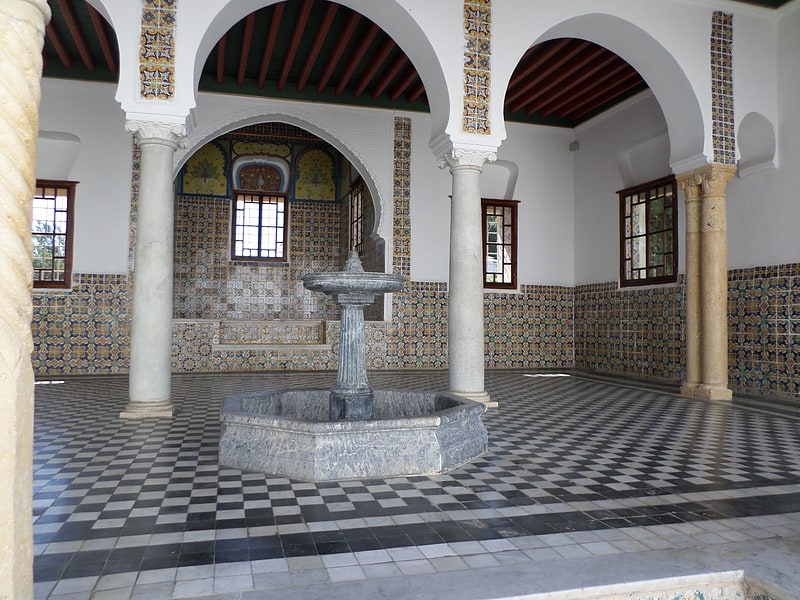
Also known as: المتحف الوطني باردو
Museum in Sidi M'Hamed, Algeria. The Bardo National Museum of Prehistory and Ethnography is a national museum located in Algiers, Algeria.
The edifice is a former Moorish villa. It was opened as a museum in 1927.
Nothing specific is known about this residence, formerly in the countryside and now encompassed in the modern city. H. Klein tells us that the palace was built in the eighteenth century and that it would have been the property of Prince Omar before the French conquest. A document, in the form of a drawing signed by Captain Longuemare, specifies that it was Mustapha ben Omar who was a very rich Tunisian. In 1926, the Bardo Palace was ceded to the Domains by Mrs Frémont, sister and heiress of Pierre Joret.[10]
Address: 3, rue Franklin Roosevelt, 16100 Algiers (سيدي امحمد دائرة)
Algerian National Theater Mahieddine Bachtarzi
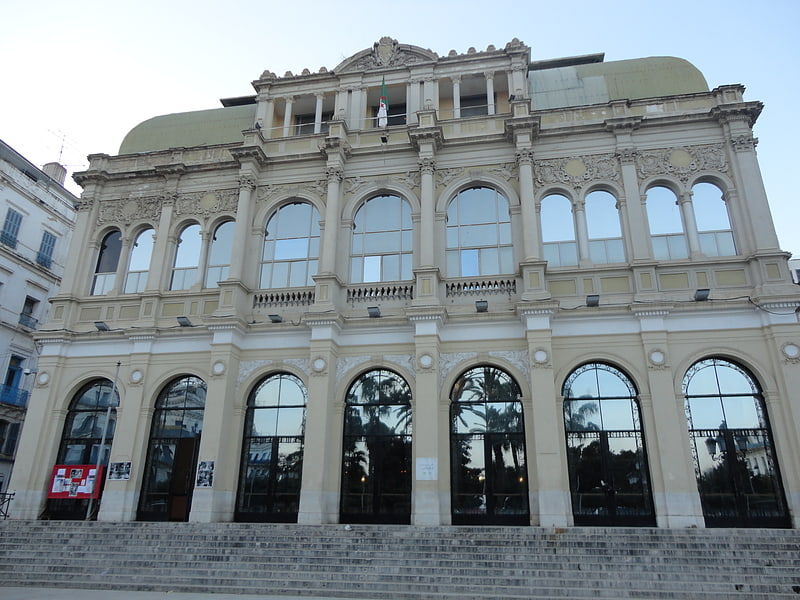
Also known as: المسرح الوطني الجزائري
Building in Algeria. The Théâtre National Algérien Mahieddine Bachtarzi, formerly known as the Algiers Opera House, is a historic building in Algiers, Algeria. It was built from 1850 to 1853. It was designed by architects Charles Frédéric Chassériau and Justin Ponsard in the Baroque Revival style. After it caught fire in 1883, it was rebuilt.[11]
Address: 10 Rue Hadj Omar, Algiers (باب الوادى دائرة)
Ali Bitchin Mosque
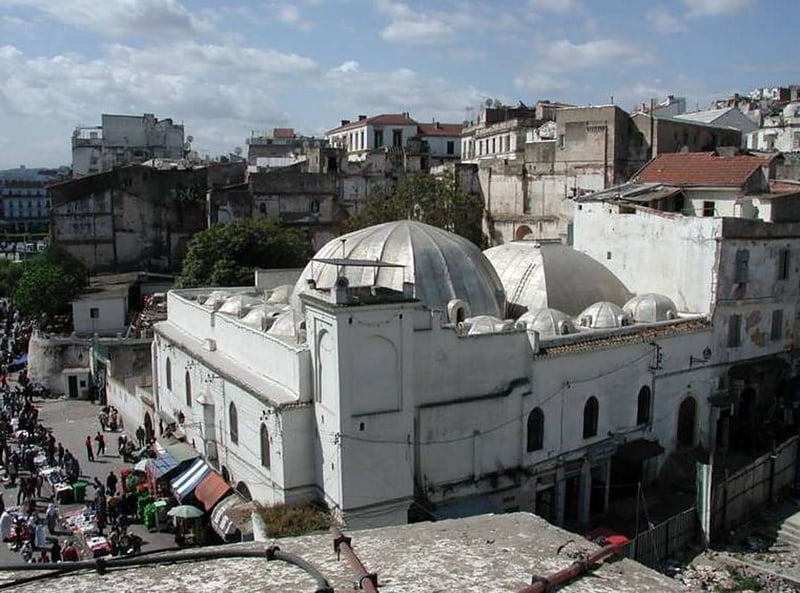
Ali Bitchin Mosque or Zawj Euyun Mosque is a historic mosque in Algiers, Algeria. Ali Bitchin ordered the construction of the mosque in 1622. it is situated inside the UNESCO World Heritage Site Casbah of Algiers. It's located at the crosspoint between the Bab al-Wadi Street and the lower area of casbah.[12]
Palace of the Dey
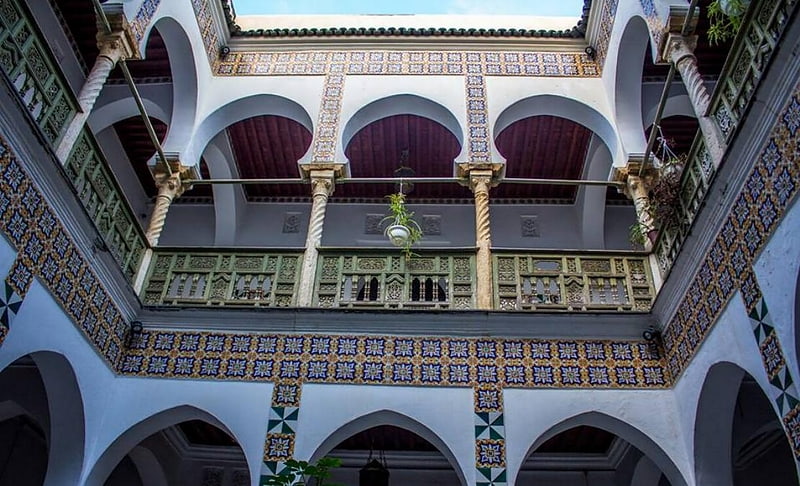
Historical landmark in Algeria. Palace of the Dey, also known as Algeria Castle or Dey Hussein Palace, is an Ottoman era palace in the city of Algiers, Algeria. Completed in the 16th century, it is situated inside the Casbah of Algiers, and settled by successive deys of the city. It once was the second largest palace in the Ottoman Empire, next to Topkapi Palace in Istanbul.[13]
Bordj Tamentfoust
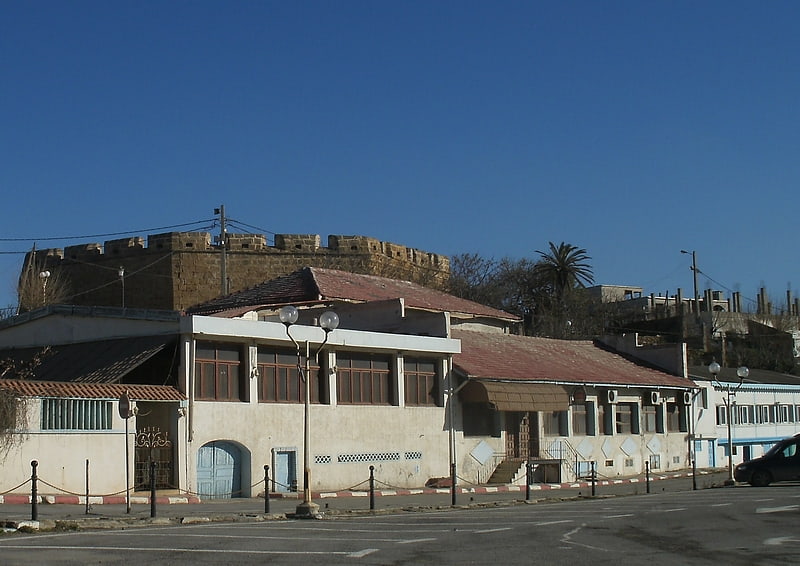
Bordj Tamentfoust is an Ottoman fort in the city of Tamentfoust, Algeria. The fort is among several Ottoman forts built during the Ottoman rule of Algeria, which were established to guard the city of Algiers. With the exception of Bordj Tamentfoust, most of the forts no longer exist or in a good condition. The fort was built on the highest point of Tamentfoust, at the western end of the Bay of Algiers.[14]
Sacré Coeur
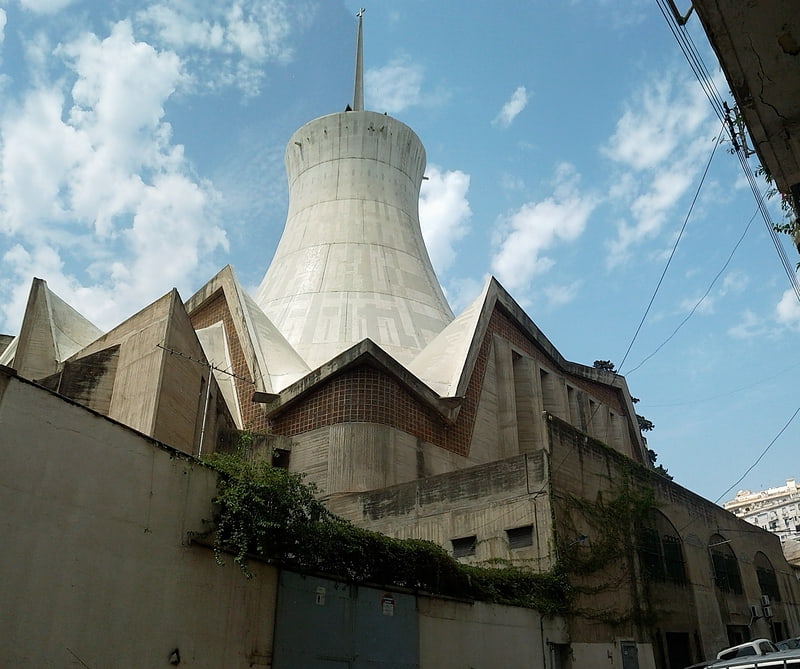
Also known as: كاتدرائية القلب الأقدس
Cathedral in the Alger Centre, Algeria. Cathédrale du Sacré-Cœur d'Alger is a Roman Catholic church located in Algiers, Algeria. Completed in 1956, it became the new cathedral in the capital after the Cathedral of Saint Philip of Algiers reconverted into a Muslim Ketchaoua Mosque. The Cathédrale du Sacré-Cœur d'Alger is the cathedral church of the Archdiocese of Algiers.
Construction of the church began after a wish of Bishop Leynaud in 1944. It was elevated to a cathedral in December 1962 and consecrated in 1963. The designers of the building, Paul Herbé and Jean Le Couteur, along with engineer René Sarger, were inspired by the Gospel of John. Its nave measures 52 metres (171 feet) long and 35 metres (115 feet) wide. The church is noted for its central tower.
At the entrance to the nave there are small organs offered by the parish of Boufarik opposite which is a mosaic. The mural dates to 324, from the first Roman basilica of Castellum Tingitanum (Chlef). The altar is made of Carrara marble, and houses the relics of numerous African saints.[15]
Address: Rue IBN HAZM, 16000 Sidi M'Hamed (سيدي امحمد دائرة)
Sidi M'hamed Bou Qobrine Cemetery
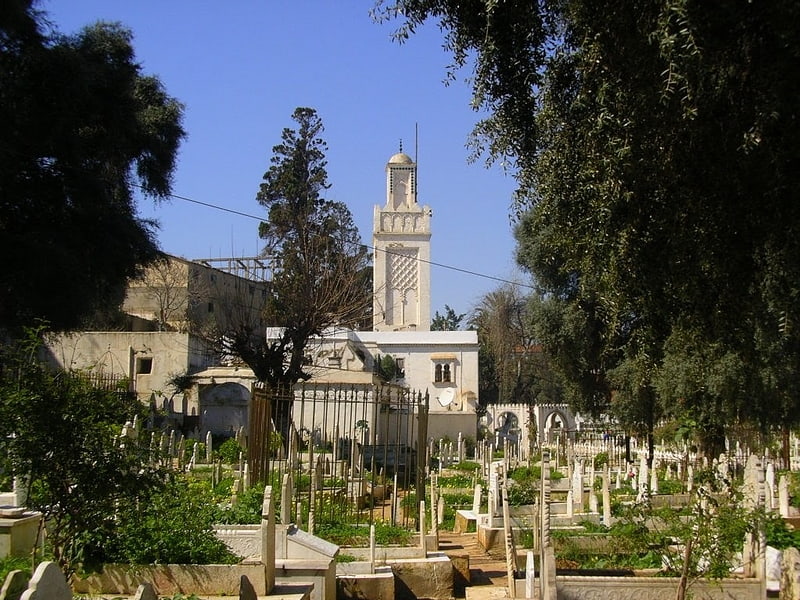
Sidi M'hamed Bou Qobrine Cemetery is a cemetery in the commune of Belouizdad in Algeria. The name relates to Sidi M'hamed Bou Qobrine.[16]
National Museum of Antiquities and Islamic Art
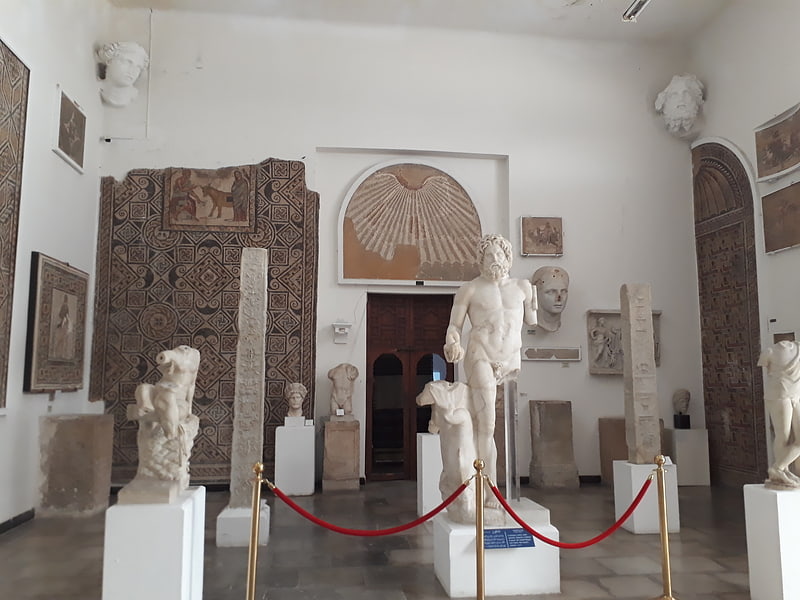
Museum in Algeria. The National Museum of Antiquities and Islamic Art is an art museum in Algiers, Algeria.[17]
Address: 03 Rue Franklin Roosevelt, 16000 Alger (سيدي امحمد دائرة)
Tamentfoust
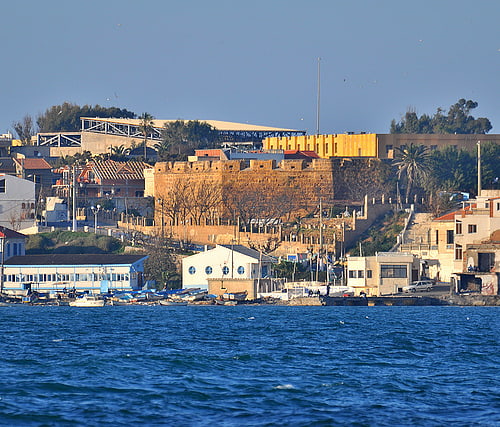
Also known as: تامنفوست
Tamentfoust, the classical Rusguniae and colonial La Pérouse, is a site in the Dar El Beïda District of Algiers in Algeria.[18]
Djamaa el Djedid
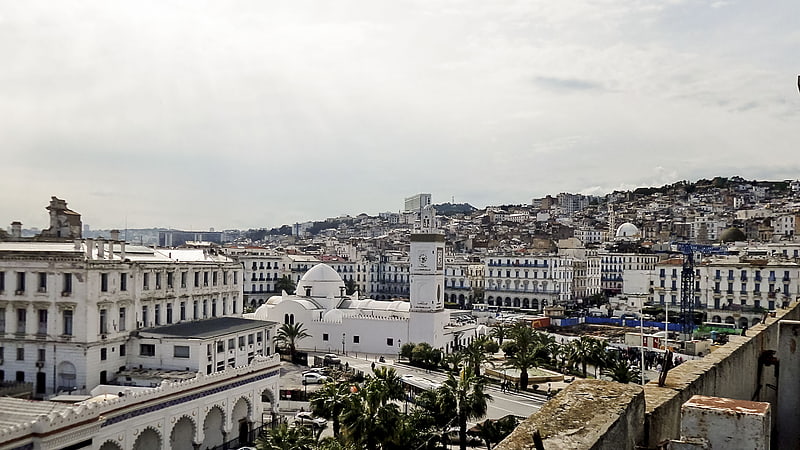
Also known as: الجامع الجديد
Mosque. Djamaʽa el Djedid, also rendered Djamaa al-Djedid, or Jamaa El Jedid is a mosque in Algiers, the capital of Algeria. It is dated to 1660/1070 AH by an inscription over its main entrance portal. That inscription also attributes its construction to al-Hajj Habib, a Janissary governor of the Algiers region appointed by the Ottoman imperial administration in Istanbul During the French colonial rule, the mosque was called the Mosquée de la Pêcherie and in English the Mosque of the Fisherman's Wharf.[19]
Address: Boulevard Amilcar Cabral, Algiers (باب الوادى دائرة)
Dar Aziza
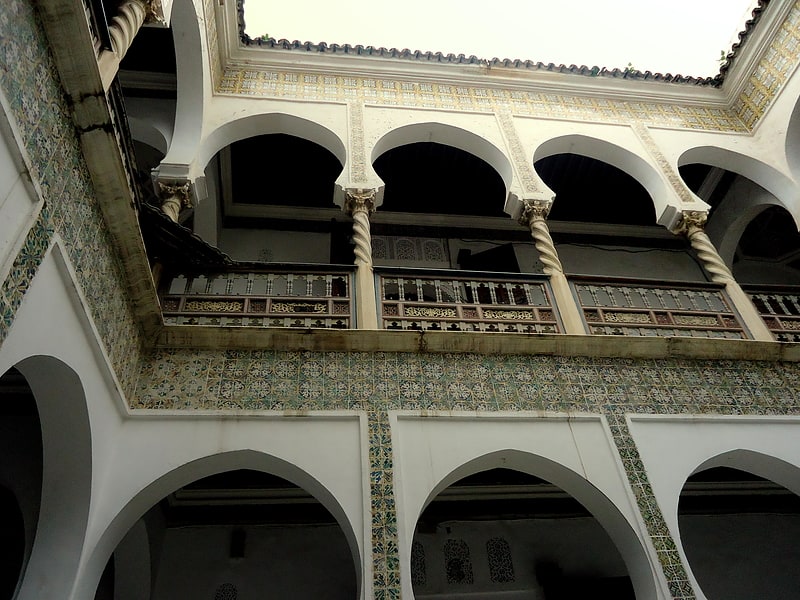
Museum in Algeria. Dar Aziza is a 16th-century Moorish palace located in the Casbah of Algiers in Algeria. Today, it houses the National Agency of Archaeology and Protection of Historic Sites and Monuments. Dar Aziza, arguably the most iconic surviving building of its era in Algiers, was part of a large governmental compound known as Janina Palace, which existed before the arrival of Turkish corsairs.[20]